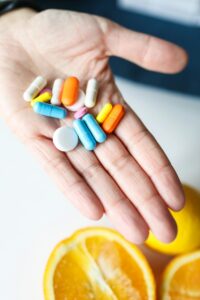
When you turn on the tap and fill your glass with water, you probably trust that it’s clean and safe to drink. After all, the water treatment plants and municipal systems work hard to provide us with clean water, right? However, not all water is as pure as it may seem. Despite treatment processes, there are contaminants that make it through municipal treatment and end up in your tap water.
In this blog post, we’ll explore five unexpected contaminants that could be lurking in your drinking water and what you can do about them.
- Lead: A Silent Health Hazard
Lead contamination in drinking water is a serious concern, especially in older homes. It can enter the water supply through old lead pipes, plumbing fixtures, or even solder used in the construction of water systems. Lead poisoning can have devastating effects, particularly for young children, causing developmental delays and cognitive issues.
- Chlorine: More Than Just a Pool Chemical
Chlorine is commonly used by water treatment plants to disinfect drinking water and kill harmful bacteria and viruses. While it’s effective for disinfection, chlorine can leave an unpleasant taste and odor in your tap water as well as harmful disinfection byproducts called THMs.
- Pharmaceuticals: Unwanted Chemical Residues
Pharmaceutical drugs, such as painkillers, antibiotics, and hormones, are increasingly being found in water supplies. These chemicals can enter the water through human waste, wastewater treatment plants, or improper disposal of medications. Though the levels are typically low, exposure to these contaminants over time may have unknown health effects.
- Pesticides and Herbicides: Chemicals From Agriculture
Farmers commonly use pesticides and herbicides to protect crops from pests and weeds. Unfortunately, these chemicals can end up in nearby water supplies through runoff during heavy rain or irrigation. While water treatment plants work to filter out these substances, small amounts may still remain in your tap water.
- Microplastics: Tiny Pieces of a Growing Problem
Microplastics, which are tiny fragments of plastic less than 5 millimeters in size, are now found in many water sources worldwide. These plastic particles can come from a variety of sources, such as plastic waste, synthetic fibers from clothing, or plastic containers. Although the health effects of microplastics in drinking water are still being studied, their presence is concerning due to their potential to accumulate in the body.
What you can do: Protecting Your Health Starts with Awareness
While many people assume that the water coming out of their taps is safe, contaminants like lead, chlorine, pharmaceuticals, pesticides, and microplastics may still be lurking, often in surprising places.
Mineva Treatment system: A modern twist on a well-known method
The mineva process uses electricity for the disinfection and purification of water which eliminates the need for chlorine. Carbon filters on the system remove chlorine from the water, making it safe to drink. The mineva process also causes contaminants like heavy metals and pharmaceuticals to bond together and create a larger particle that is then filtered out.
The Benefit of Using Electricity: KEEPING MINERALS
Your body relies on your drinking water for a large portion of your mineral intake. Think Calcium, magnesium, and potassium. These minerals are essential to good health. If your water treatment removes all minerals (R.O. or distilled), then you are starting out at a loss every time you drink a glass of water. Demineralized water is known as “aggressive” which means it leaches from other things because it is not naturally balanced. When you drink demineralized water, it is leaching from YOU. Water that has been treated with the mineva process, retains its natural minerals because they are not affected by the electrolytic process.
For more information on the importance of minerally balanced water, read the article published by the W.H.O which can be found HERE.
For more info about our treatment process, have a look at the “Technology” section.
